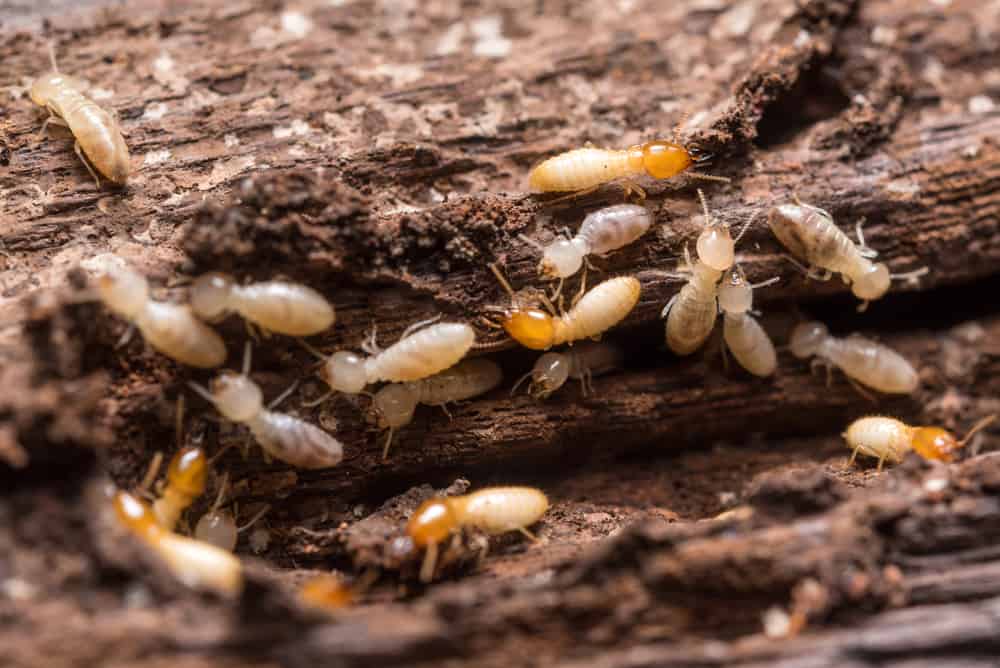While they are critical to the health of the ecosystems they belong to, termites are any homeowner’s worst nightmare. These tiny, colonial insects can cause serious damage that can be costly to repair. Given enough time, they can chew their way through the framing members that keep your home structural and sound. They can also cause serious damage to furniture, firewood, drywall, flooring, and improperly stored building materials. As a homeowner, knowing how to spot and prevent subterranean and dry wood termites is crucial to help you protect your home and your belongings.
In this article, we’ll take a look at the physical differences between the two types of termites. We’ll also learn about the conditions that favor them, how to identify their damage, and when it’s time to call in professional help.
Subterranean vs Drywood Termites
Knowing the differences between subterranean and dry wood termites is your first line of defense toward protecting your home and your belongings. Once you know how these insects live and what they tend to target, you can better identify their damage and resolve issues that may attract them to begin with.
When it comes down to it, there are a few key differences between subterranean and dry wood termites: their physical appearance, where and how they nest, and the way they attack the wood.
Appearance
The first thing to do when trying to identify a termite is to make sure you’re not looking at an ant. While both types may resemble ants, termites have straight antennae and a wide waist. Ants, on the other hand, tend to have much narrower waists at the transition to the abdomen. While both insects have long wings during their swarming stage, those of the termite are much longer, measuring about twice the length of its body. Additionally, all four of a termite’s wings are the same length while an ant’s forewings will be longer than its hind wings.
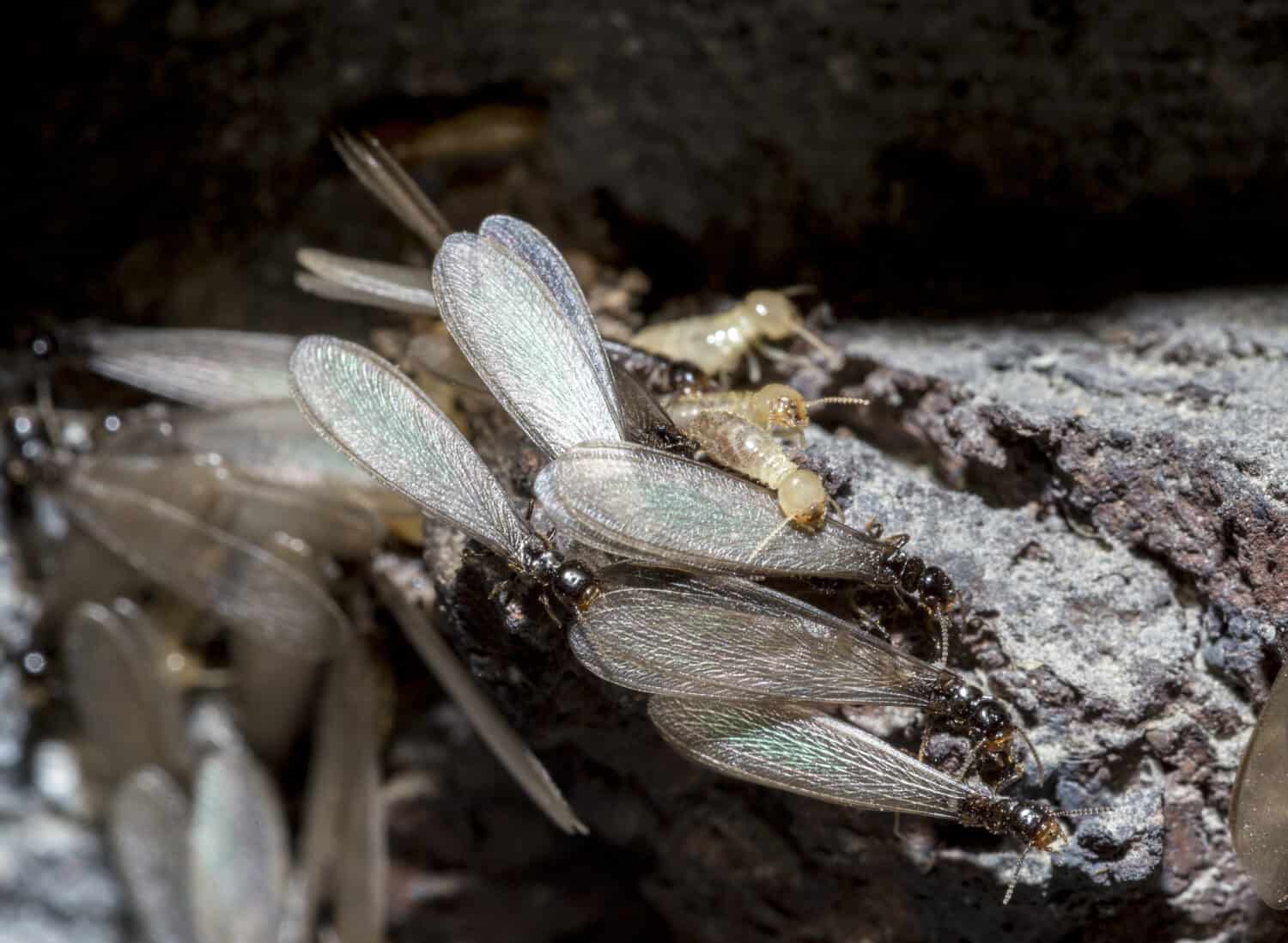
These eastern subterranean termites (
Reticulitermes flavipes) have four long, translucent wings with simple veins along their edges.
©Ilya Images/Shutterstock.com
Types of Termites
Now that we know how to differentiate ants and termites, let’s look at how to separate drywood termites from subterranean termites. Inside of the wood, worker termites of both types look about the same. They’re very small, usually about 1/4″ long, and light cream. You won’t likely see them unless you’ve lifted or broken open a piece of infested wood. If you encounter termites in the day-to-day, they’re probably the reproductive sort. As with ants, one of the key features that distinguishes between reproductive termites is their wings. The wings of the subterranean termites usually have a single, simple vein that runs down each wing edge. Drywood termites, on the other hand, have complex wing veins running down their edges. Wing coloration will vary between species.
Once a reproductive termite lands near its new nesting site, it sheds its wings. If you notice pairs of long wings accumulating near windows, doors, porch or deck edges, or near your foundation, examine them closely. If they look like termite wings, it’s a good idea to have a professional come out and examine your home.

Even wingless worker and soldier termites are easy to distinguish from ants. Note the thick waist, straight antennae, and long, oval-shaped body.
©Witsawat.S/Shutterstock.com
Nesting Locations
Subterranean termites require constant moisture throughout their lives to prevent their bodies from drying out. Usually, this means that they nest in wood that is in contact with the ground. Deck posts, crawlspaces, and sill plates are common nesting locations. A leaking pipe, overflowing gutter, or source of condensation, however, can provide some species with enough moisture to thrive, even if the wood isn’t touching the ground. This means that subterranean termites can nest virtually anywhere in the home where there may be wet or decaying wood.
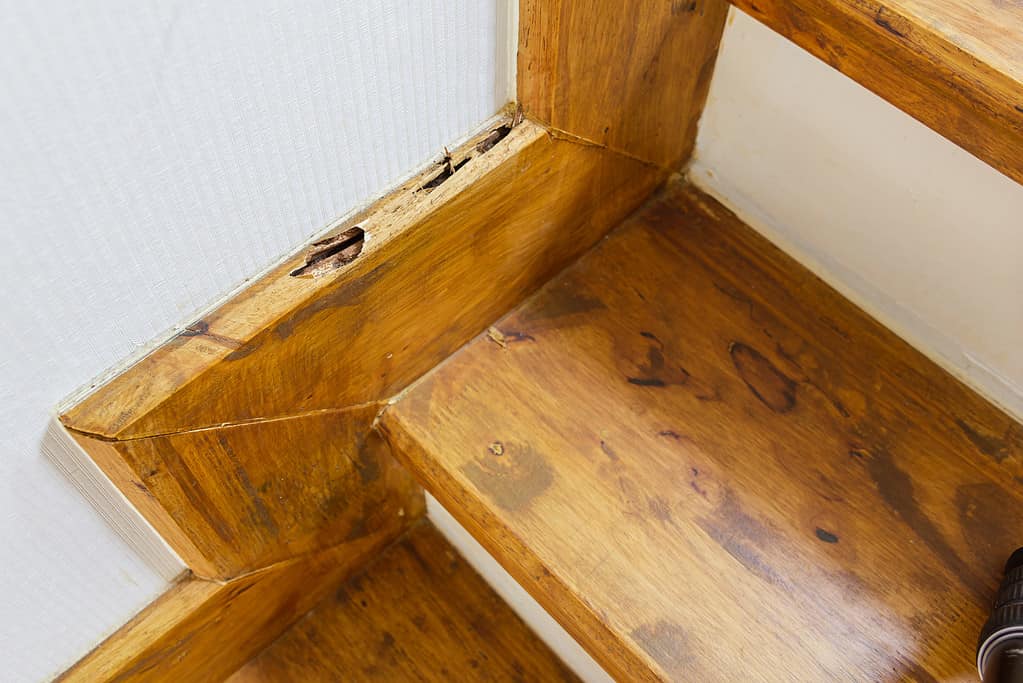
Drywood termites can nest in dry, sound wood like that used in trims, casings, and flooring.
©aphichart/iStock via Getty Images
Unlike subterranean termites, drywood termites do not require constant moisture to support a colony. They obtain all of the moisture they need from the wood they consume and can recycle that moisture within their bodies. This makes them much more versatile in their nesting locations. Drywood termites can infest virtually anything in your home that is made of cellulose, including furniture, cardboard, wallpaper drywall, and, of course, framing members. They usually enter the home via cracks and crevices in foundations, behind siding, and along roof eaves.
Signs of Damage
Knowing the signs of termite damage will help you address an existing problem before it gets any worse. To protect them from drying out as they move in and out of the home, subterranean termites may construct a series of mud tubes. These tubes are made of softwood and dirt and usually appear near the ground on the outside of the building. Some of these tubes, called drop tubes, may extend from the wooden part of the structure directly to the soil.
Termite Fecal Matter
Probably the clearest sign of a dry wood termite infestation is the presence of termite fecal matter, called frass. As the termites eat the wood, they produce waste which they expel through “kick-out” holes in the wood surface. As the frass falls from the holes and accumulates, it will begin to resemble small piles of dry dust. If you notice dust piling up near windows, doors, furniture, mantles, etc., a closer inspection is warranted.
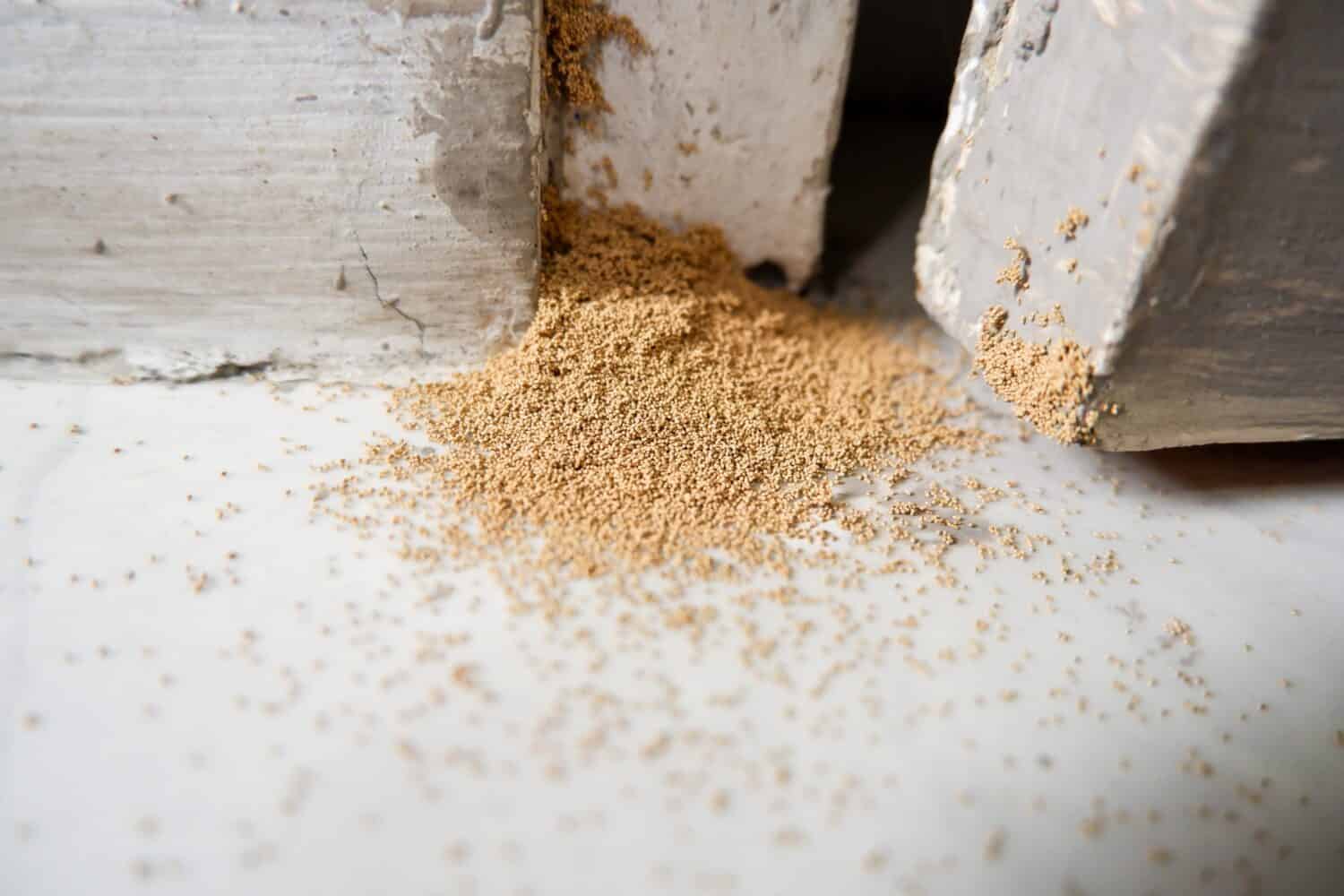
Piles of frass, or insect excrement, near wooden structures are signs of a dry wood termite infestation.
©Raja Sopan Purba/Shutterstock.com
Regardless of the type of termite infesting your home, damaged wood tends to become soft, brittle, or both. Wood harboring subterranean termites will likely be visibly damp and may be thin or spongy. The wood surface, especially where damp, will generally give way to a screwdriver or knife. In particularly bad cases, you may be able to push through the wood with your finger. Galleries inside of the wood will run with the grain of the wood and usually contain “mud”, which consists of termite excrement. Wood damaged by dry wood termites may be especially brittle or chalky and, when broken open, may show a series of galleries that run along the grain of the wood as well as across it. These galleries may also contain termite frass.
Which Termites Cause the Most Damage?
Though all termite damage can be very serious, subterranean termites are generally regarded as the most damaging type. Whereas a very large colony of dry wood termites may comprise a few thousand members, a well-established subterranean colony may support hundreds of thousands of individuals. As a colony grows, so does its capacity to damage a structure. After all, those termites need to be eaten. It is estimated that subterranean termites alone cause billions of dollars worth of cumulative damage annually in the U.S. alone.
How to Get Rid of Termites
Unfortunately, because of their secretive nature, it can be very difficult to determine the extent of a termite infestation. This means that it is also extremely difficult to handle a termite infestation without the help of a professional.
If you think you may have a termite infestation on your hands, don’t hesitate to call for help. Professional extermination companies have at their disposal a variety of tools, chemicals, and of course, experience, which they can use to tackle an infestation from multiple angles. Options generally include fumigation, localized chemical treatment, or whole-house heat treatment and go hand-in-hand with material removal and repair. The longer you wait to get the ball rolling, the longer the insects have to damage your home and personal belongings.
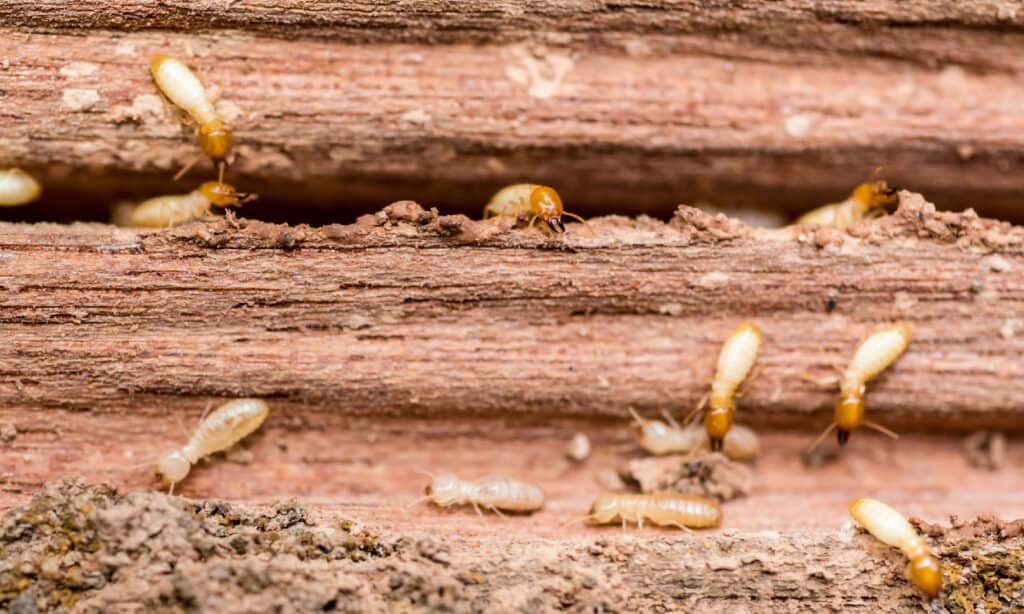
Once an infestation has begun, you should enlist the help of a professional to eliminate it.
©iStock.com/viiwee
Though getting rid of termites requires professional help, deterring them starts with the homeowner. Keep a watchful eye for problems with the home that may entice termites. Sources of moisture like dripping pipes, condensation, and roof or basement leaks can soak framing lumber and attract subterranean termites. If possible, address these problems as you notice them. Piles of firewood and construction materials can provide initial nesting sites for termites, so store them away from the home if possible and keep them out of contact with the soil. Additionally, pay good attention to your home’s foundation. Large holes and cracks can allow insects easy entry, and vegetation growing too close can dampen framing and slow down drying.
Thank you for reading! Have some feedback for us? Contact the AZ Animals editorial team.

